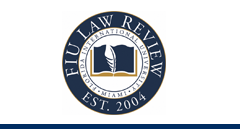Alternate Title
A New Methodology for the Analysis of Visuals in Legal Works
Keywords
visual rhetoric, visual legal rhetoric, visual literacy, multimodal, multimodality, proactive, Proactive Law, visualization, Legal Design, visual context, verbal context, visual cultural context, visualization in contracts, cartoon contracts, comic book contracts, Mise en Scène, diagrammatics
Abstract
The goal of this Article is to introduce a comprehensive methodology for the analysis of visuals used for communication in legal works, by which I mean transactional and litigation documents, legal instruments, primary and secondary sources of law, and legal informational materials. To date, the scholarship on visuals in legal communications has been heavily descriptive, with some forays into the ethical and practical considerations of the use of “visualized” legal works. No one has yet devised a comprehensive analytical methodology that draws upon the disciplines of visual literacy, visual cultural studies, visual rhetoric, and mise en scène analysis to evaluate the strengths and weaknesses of actual examples of highly visual legal documents and critique their efficacy and propriety in a variety of legal settings. This Article will fill that gap in the literature. The new methodology evaluates the following aspects of visual legal works:
• Immediate Visual Context
- Analysis of Meaning
-Taxonomy of Purpose and Function
• Immediate Verbal Context
• Visual Cultural Context
• Mise en Scène and the Rhetorical Topic of Arrangement
• Visual Rhetoric and the Ethical and Professional
Propriety of the Work. Lawyers, judges, and law students typically do not receive training in visual literacy regarding the reading and interpretation of visual images, and much less so in the design principles required to create the most effective visuals for legal communications and legal instruments, such as contracts. This condition persists in spite of the fact that visual images can communicate across language and cultural barriers, taking advantage of the enormous speed and power of visual communication. In equal measure, knowledge and understanding of these principles will enable lawyers to design and use effective visuals, and to challenge or respond to the visual legal communications proffered by their opponents in litigation or negotiation, or their counterparts in a transaction. My intent in this Article and the methodology it presents is to examine visual elements as visuals, not as a translation or alternative form of verbal communication. The approach of trying to translate visual works into verbal arguments or verbal elements of legal reasoning limits the scope and the effectiveness of the visual works, because communication through visuals employs a separate visual language, and not in a literal or verbal sense. The methodology proposed in this Article is a set of tools that can help verbally oriented law-trained writers to become better readers, evaluators, and creators of visual communications in the law.
Recommended Citation
Michael D. Murray, A New Methodology for the Analysis of Visuals in Legal Works, 16 FIU L. Rev. 381 (2022), https://doi.org/10.25148/lawrev.16.2.9.
Included in
Communications Law Commons, Contracts Commons, Cultural Heritage Law Commons, Entertainment, Arts, and Sports Law Commons, Intellectual Property Law Commons, Law and Society Commons, Litigation Commons





